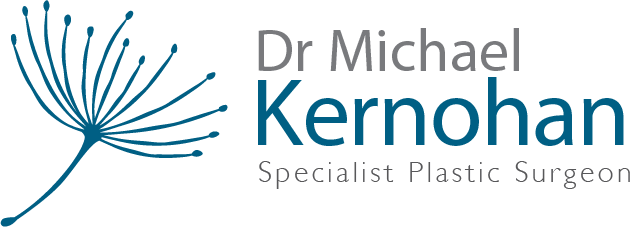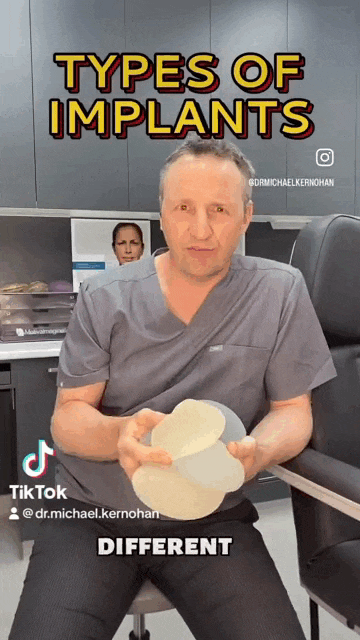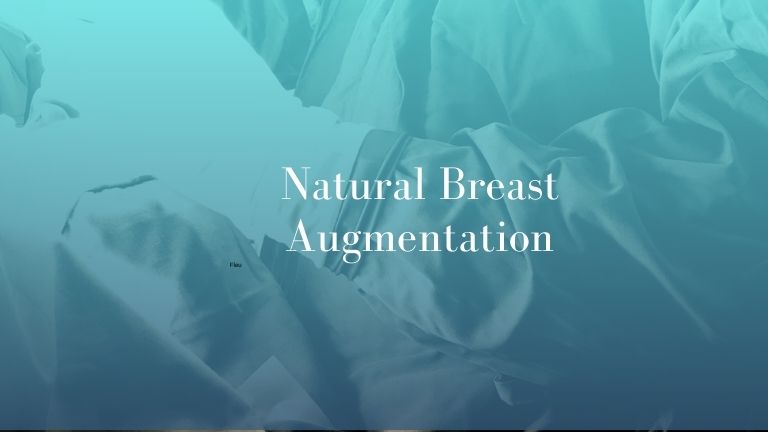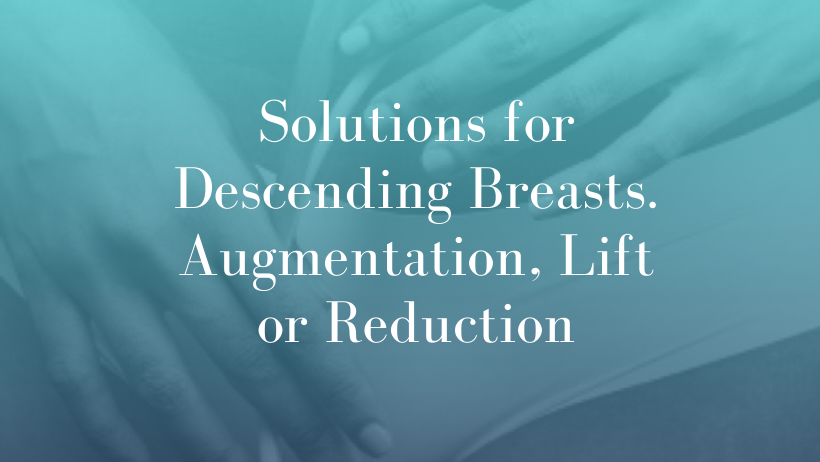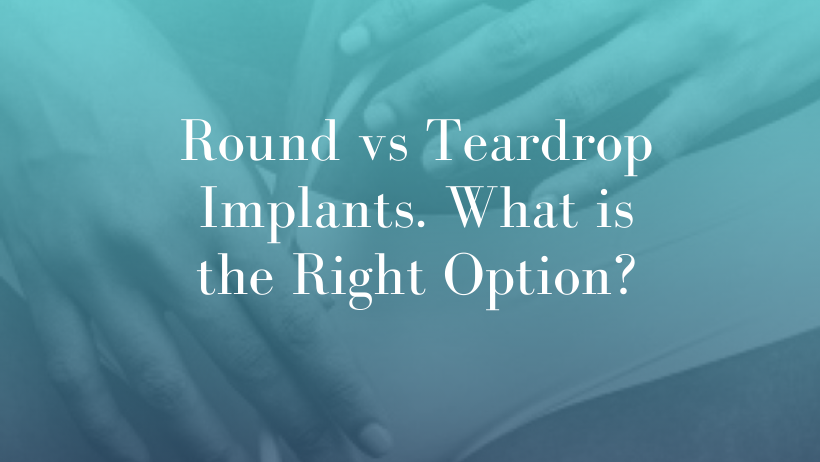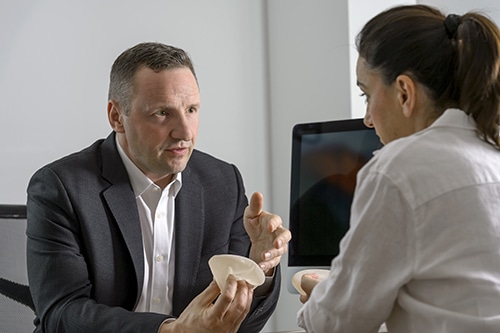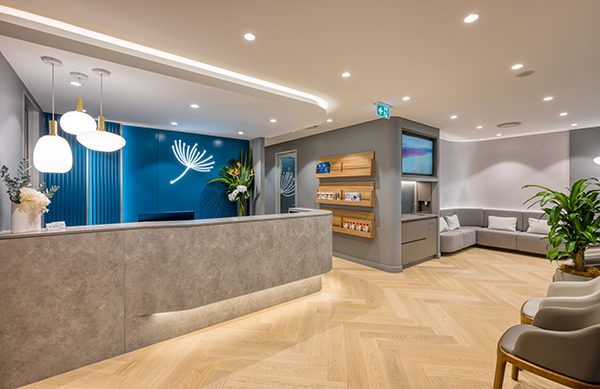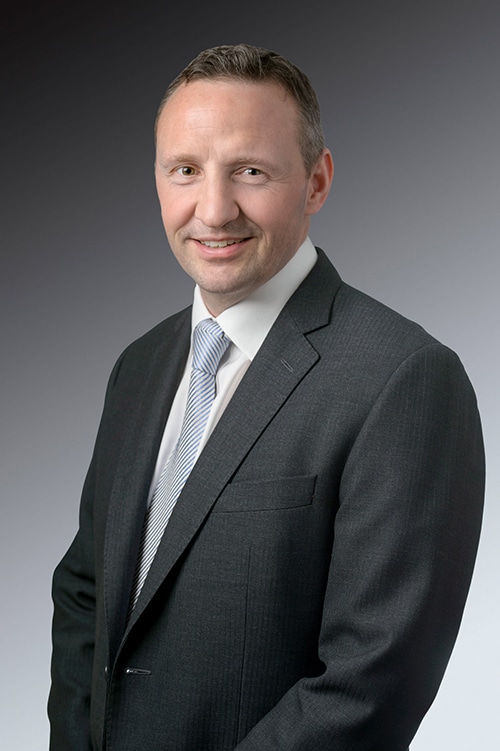Understanding Breast Enlargement – Solutions for Breast Augmentation
Leaving aside the myths of breast enlargement, it’s important to note that breast augmentation surgery is currently the only way to significantly and reliably enlarge breasts size. Breast augmentation is a serious surgical procedure that involves placing silicone or saline implants under the breast tissue or chest muscle to increase the size, shape, or fullness of the breasts.
Dr Michael Kernohan, a specialist plastic surgeon based in Sydney, Australia, can assist with breast enlargement through the use of breast implants, fat transfer, or a combination of both methods.
Take the Quiz
Reasons to Choose Breast Enlargement
The desire for larger breasts can stem from a variety of personal, social, or cultural factors, and these are some of the reasons why someone might consider breast augmentation:
- Personal preference: Some women simply prefer to have larger breasts
- Post-pregnancy changes: Women who have experienced pregnancy and breastfeeding may notice changes in their breast size and shape and may seek breast augmentation to restore their pre-pregnancy appearance
- Congenital conditions: Some women may have congenital conditions, such as breast asymmetry or tuberous breasts that can be corrected through breast augmentation
- Reconstruction after mastectomy: Women who have undergone a mastectomy as part of breast cancer treatment may opt for breast reconstruction surgery, which often involves breast augmentation, to restore their breast shape
Myths about Breast Enlargement
There are many myths and misconceptions surrounding breast enlargement methods. Some of the most common myths include:
- Exercise can increase breast size: While exercise can help tone the muscles underneath the breasts, it cannot actually increase breast size
- Wearing a bra can prevent sagging and increase breast size: While wearing a properly fitting bra can provide support and lift to the breasts, it cannot prevent sagging or increase breast size
- Breast enlargement creams and supplements are effective: There is no scientific evidence to support the claims that breast enlargement creams or supplements can increase breast size
- Massaging the breasts can increase breast size: While breast massage can promote breast health and help reduce breast pain and swelling, it cannot actually increase breast size
- Special diets or foods can increase breast size: There is no scientific evidence to support the claims that certain diets or foods can increase breast size
Surgical Options for Breast Enlargement
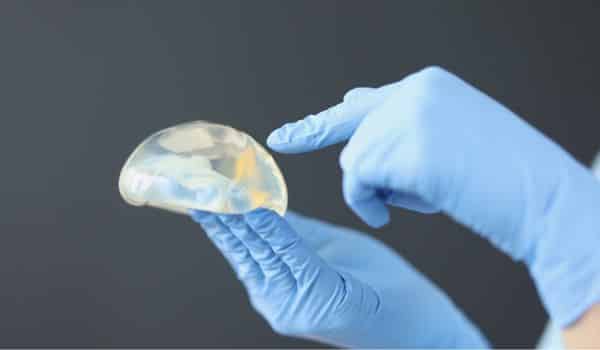
Breast enlargement, also known as breast augmentation, can be achieved through various surgical methods. Some of the most common surgical options for breast enlargement include:
1. Breast implants
Breast implant surgery is a type of cosmetic surgery that changes the appearance of the breasts. This procedure is done to enlarge the size of the breasts, or to change the shape and symmetry. The implants are inserted through an incision in the breast area, and can be placed either above or below the chest muscle, depending on the patient’s individual needs and goals. Breast implants can be silicone or saline, and come in a variety of sizes, shapes, and textures. The recovery process usually takes 1-2 weeks and may include some discomfort and swelling. The results are generally long-lasting, though there may be complications such as infection or implant rupture. Ultimately, breast implants can give a woman a more aesthetically pleasing figure.
2. Fat transfer
Fat transfer also known as fat grafting or autologous fat transfer, is a surgical method of breast enlargement that involves removing fat from another area of the body, such as the abdomen or thighs, and transferring it to the breast tissue to increase volume and fullness.
The fat transfer procedure involves several steps:
- Harvesting: The first step of the procedure involves the removal of fat from the donor site, typically using liposuction. The fat is carefully harvested to ensure the viability of the fat cells for transplantation.
- Processing: The harvested fat is then processed to remove excess fluids, blood, and debris. This creates a concentrated mixture of healthy fat cells that are ready for transplantation.
- Transplantation: The processed fat is then injected into the breast tissue through a series of small incisions, using a specialised cannula. The fat is carefully distributed throughout the breast tissue to achieve the desired shape and size
Fat transfer can be a good option for women who want a more subtle enhancement, or who prefer a more natural look and feel to their breasts. It can also be useful for women who have experienced changes to their breasts due to weight loss or ageing, or who are looking for a secondary procedure to correct the appearance of their breasts after an initial breast augmentation.
What Is The Difference Between Breast Augmentation And Implants?
Breast augmentation is a general term that refers to any surgical procedure that is designed to increase the size or enhance the appearance of the breasts. Breast implant surgery is one of the most common methods used to achieve breast augmentation. Breast augmentation can also be achieved using fat transfer, which involves harvesting fat from another area of the body and injecting it into the breast tissue to increase the volume and fullness of the breasts.
In other words, breast augmentation is a broader term that refers to any procedure designed to enhance the appearance of the breasts, while breast implants are a specific method of breast augmentation that involves placing silicone, saline, or cohesive silicone gel-filled implants into the breasts.
The specific steps involved in a breast augmentation procedure can vary depending on the individual needs and goals of the patient. During the pre-operative consultation with your plastic surgeon you will find out which method is optimal to help you achieve your aesthetic goals.
Download Dr Kernohan’s Breast Augmentation Guide
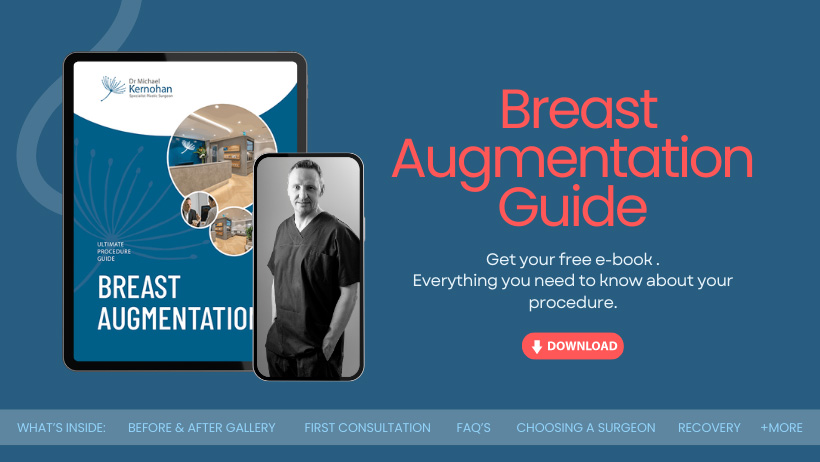
FAQs about Solutions for Breasts Enlargement
What advantages does breast augmentation surgery offer?
- Breast augmentation surgery offers several potential advantages, including increased breast size and improved breast shape and symmetry. The procedure can also help to balance asymmetrical breasts, restore breast volume lost due to weight loss or ageing, and improve overall body proportion and contour. However, it’s important to approach breast augmentation with realistic expectations and to work with a qualified and experienced plastic surgeon to ensure a safe and successful outcome.
How long does breast augmentation last?
- Breast augmentation can provide long-lasting results, but the longevity of the procedure can depend on several factors, including the type of implant used, the patient’s age, and lifestyle factors. Breast implants are not designed to last a lifetime and will likely need to be replaced at some point in the future. The lifespan of breast implants varies depending on the type of implant used. Saline implants typically last around 10-15 years, while silicone implants can last longer, up to 15-20 years or more. The lifespan of breast implants can also be affected by other factors, such as weight fluctuations, pregnancy, and breastfeeding. Significant weight gain or loss can cause the breasts to change in size and shape, potentially impacting the appearance of the implant. Pregnancy and breastfeeding can also cause changes in the breast tissue, which can affect the appearance of the implant over time.
How painful is a breast augmentation with implant surgery?
- The level of pain experienced can depend on several factors, including the surgical technique used, the placement of the implants, and the individual’s pain tolerance. Most women who undergo breast augmentation surgery will experience some level of discomfort, pain, and swelling after the procedure. However, these symptoms can usually be managed effectively with medication, such as painkillers and anti-inflammatories, and subside within a few weeks after surgery. The level of pain and discomfort can be further minimised by following all pre and post-operative instructions, avoiding strenuous activity during the recovery period, and allowing the body time to heal and adjust to the new implants.
What is the amount of fat required for a fat transfer to the breasts?
- Fat transfer to the breasts is an effective way to improve your breast shape, size, and overall appearance. The amount of fat needed for this procedure depends on your desired results. Generally, it takes about 300-400 cc of fat per breast to make a noticeable difference. During the procedure, your surgeon will remove fat from other areas of your body, usually your abdomen or thighs, and inject it into your breasts. As the fat starts to take shape, the surgeon will use fine needles and massage to ensure the fat is evenly distributed. If a larger volume of fat is needed, additional fat harvesting and injecting will be done. The entire procedure usually takes about two to three hours. However, the amount of fat that can be safely transferred will depend on several factors, including the patient’s overall health and the availability of fat in the donor site. You may require multiple fat transfer procedures to achieve your desired outcome.
How long is the recovery period after breast augmentation surgery?
- The recovery period after breast augmentation surgery can vary depending on the individual patient and the type of procedure performed. Most patients can return to work and other normal activities within a few weeks of the surgery, but it can take several months to a year or more for the breasts to fully settle into their final shape and position.
Further Reading about Breast Procedures with Dr Kernohan
- Read Dr Kernohan’s Breast Lift Surgery Page
- Read Dr Kernohan’s Breast Augmentation Surgery Page
- Read Dr Kernohan’s blog about Round Vs Teardrop Implants – What Is the Best Option?
- Read Dr Kernohan’s Breast Lift with Implants Surgery Page
- Read Dr Kernohan’s blog about What Is the Best Implant Placement Option?
